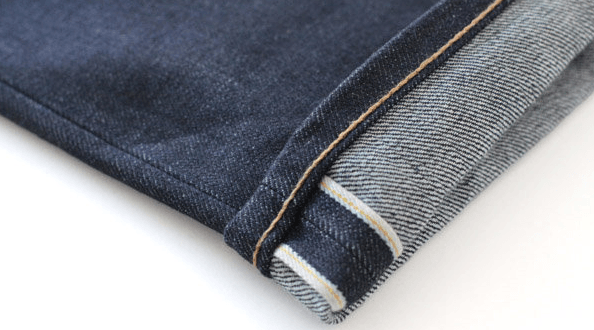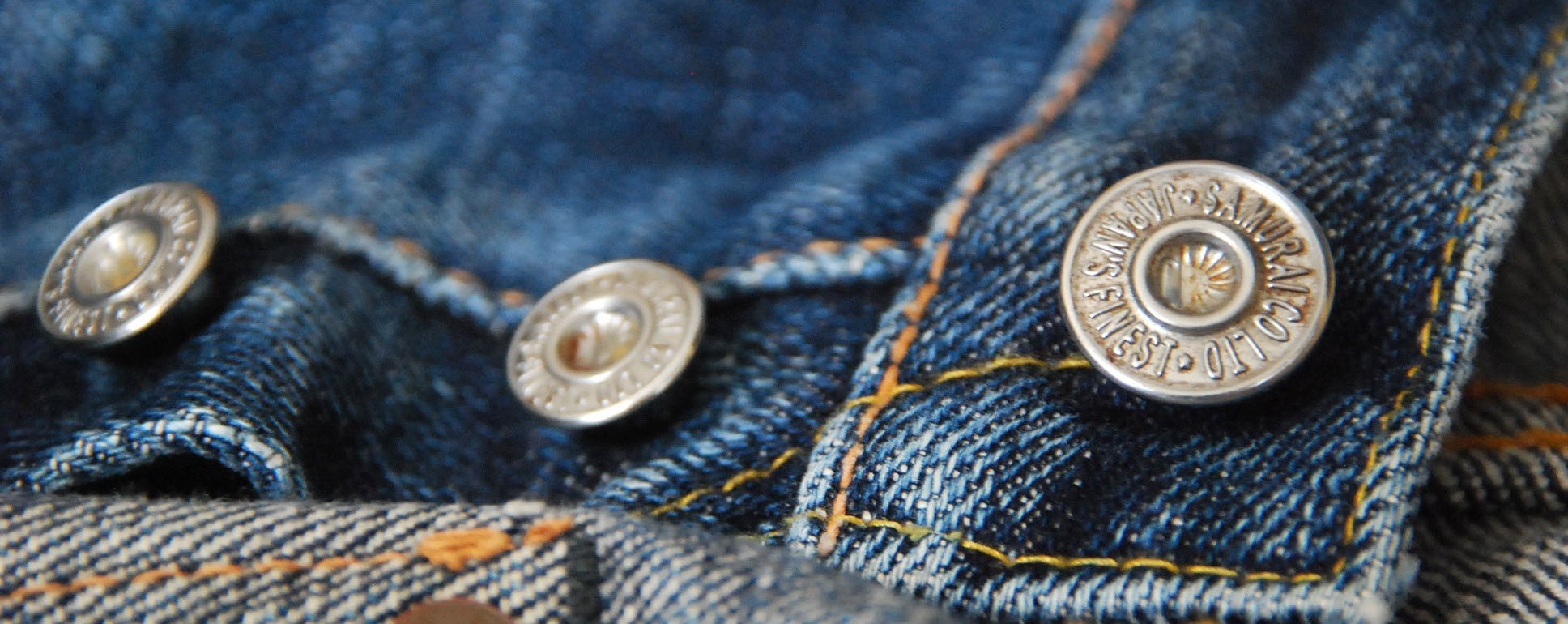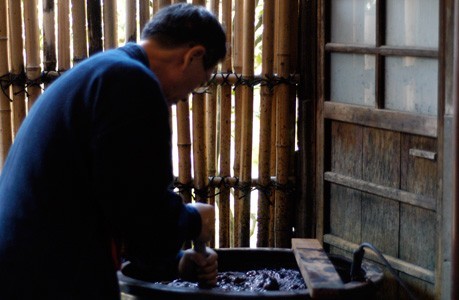
Huh? What’s so special about “raw denim”?
We’re happy and proud to announce that today marks our 100th article! In our short-lived existence thus far, we’ve been fortunate to see some strong growth (over 100K page view’s/month) and receive some solid feedback. Thanks to all for making it happen!
When looking back on our past few months, it dawned upon me that we’ve been writing, talking, and tweeting about raw denim in many different respects - covering topics ranging from denim care (e.g. How To Clean and Wash Your Raw Denim) to hotter issues (e.g. 4 Years Later – Levis v.s. Japanese Repro Lawsuit Still Fair Game?), to our own special features (e.g. Fade Friday).
However, not once have we ever addressed the one single question – what is raw denim and what’s so special about it?
Many question the cleanliness of raw denim (which we think is pretty much settled now – see “After 15 Months without washing, Nudie pants show ‘normal’ bacteria levels”) and others assume they have to spend an arm and a leg to get themselves set up with a pair (again, a misnomer – see “5 Raw Denim Under $100“).
In light of today’s milestone, we figured why not take the time now to tie up all loose strings.
1. What Is Raw Denim?
Also known as “dry denim” for its hard texture, according to Wikipedia, raw denim is “a denim fabric that is not washed after being dyed during its production”. In our words though…
Raw denim is denim that has been unwashed, untreated, and virtually untouched to the extent that it remains in its pure form.
Although the most common form is in jeans, there have been many other creative uses of the material (see – “5 Raw Denim Accessories You Need To Know” and “5 MORE Raw Denim Accessories You Need To Know“).
In terms of raw denim jeans though, while it is unknown exactly what percentage of denim jeans sold are washed v.s. raw, we would argue that at least 90% denim jeans are the former (note: over 450 million pairs of jeans are sold per year in the U.S. alone).

Despite raw denim jeans varying between manufacturers, aesthetically speaking there are some features shared – including the rigid, crisp look and feel; industrial, clean design; and sturdy construction.
We won’t dig too deep into the anatomy, but there are some notable differences to look for. From a higher-level, some of the primary details that you should make special note of:
- Material: Raw denim jeans are typically (but not always) produced with 100% cotton and can be sourced from a number of countries. Some folks will argue that a particular country has the “best” cotton (in terms of durability, resulting denim fades, and worn feel) and some of the most popular sources include U.S.A., Zimbabwe, and Japan.
- Weight: Ever notice how some raw denim feels really thick (and heavy) while others are much thinner (and lighter)? That’s precisely what is referred to as the denim weight – or, technically speaking, how much a yard of raw denim fabric weighs in ounces (Oz.). Putting aside the manufacturing process, the heavier the denim, themore rigid the garment (also due to starching) andmore resistent it will be to abrade.
- 12 Oz. and Less: Considered light raw denim; some producers include Rogue Territory, Nudies, andCheap Monday
- 12 Oz. – 16 Oz.: Considered mid-range weight and most common; some producers include Skull Jeans,Tellason, and Eternal
- 16 Oz. and Up: Considered heavier; some producers include Samurai Jeans, Oni Denim, and Iron Heart
- Fit: Similar to any pair of pants, raw denim jeans comes in a variety of styles, cuts, and fits; such as tapered, slim, skinny, and even anti-fit (i.e. loose/baggy). One key element to be cognizant of is whether or not your raw denim is non-sanforized or sanforized. If it is the former, then after your raw denim’s first soak/wash (see – Soaking Raw Denim: The Critical Preliminary Step and How To Clean and Wash Your Raw Denim), your denim can shrink significantly more (7% – 10%) compared to the latter (1% – 5%).
- Other: There are many other details to pay attention to when browsing raw denim, from each and every rivet and button donut, to the selvedge and slubbiness.
2. When Did Raw Denim Come About?
The term “denim” originates from the French town, “de Nîmes”, where the fabric is said to have first been produced. As the fabric was tough and hard, it was nicknamed “serge de Nîmes” (serge being French for “sturdy”), but later just shortened to “denim”.
In terms of raw denim specifically, it is difficult to trace back the exact time of raw denim’s first emergence, but it was likely between the late 1800′s and mid-1900′s. At this point, raw denim was widely produced and worn on a larger scale in America by trades workers and miners – hence the vintage Americana appeal of some brands such as Rising Sun & Co. It is worth noting that denim produced during this time was primarily, if not entirely, selvedge denim.
By the time the 1950s came about, WWII had ended and youth culture dominated. Denim became so popular that many American mills abandoned the slower shuttle looms to switch in faster, industrial machines with mass production capabilities.
What was done with the shuttle looms? Long story short, the U.S. helped rebuild many of Japan’s industries, such as the textile industry. Thus, Japan received many, many shuttle looms; kickstarting numerous denim mills, and leading to today’s “Japanese raw denim” craze.
3. How Is Raw Denim Made?
We’ll leave out some of the details here, but in a nutshell, raw denim jeans are produced via these steps:
1. Sourcing - Assuming the raw denim jeans are produced with 100% cotton, the first step is simply sourcing the raw cotton. As mentioned, cotton can be sourced from many different countries, ranging from Australia to Zimbabwe; and some will argue to the death over one country’s cotton quality versus another.
How the cotton is harvested varies with location. There are those that pick the cotton by hand while some employ mechanical techniques. Steps taken afterward include cotton carding (i.e. cleaning), inspecting, combing, opening, and blending – essentially preparing the cotton for the next stage…
2. Spinning - Now that the cotton has been sourced, cleaned, and packaged in nice long “slivers”, it’s time for it to be spun. This is the process by which denim is pulled and twists into, creating yarn to be eventually woven to create the denim fabric.
There are several types of spinning, including open-end, ring, and double ring spun (a.k.a. “ring-ring”). Though there are many more details included here, note that ring and double-ring spun denim is of higher appeal – since it is thicker, leads to stronger fade contrasts (as it doesn’t absorb indigo dye as well as open-end spun denim), and has greater slubbiness (due to uneven threads).
3. Warping & Dyeing - The cotton moves on to the next stage, “warping”. Previously touched upon in our post about “Warp, Weft, and Twill“, woven fabric consists of warp yarns (length-wise, indigo dyed) and weft yarns (cross-wise, left un-dyed and thus labelled “filling yarn”).
Warp yarns are prepared by selecting the longer yarn from the ring-spun yarn and dyeing. Regarding indigo dyeing, there are three main methods – loop dyeing, slasher dyeing, and rope dyeing. We’ll explore in depth in the future, but know that rope dyeing is considered superior as it is more laborious, specialized, and results in better fades (due to only the yarn surfaces being dyed).
4. Weaving - At this stage, the yarn is completely ready to be woven into the denim fabric. Though many associate raw denim with selvedge denim, it is during the weaving process that creates the distinction (for further reading – see “The Rundown on Selvedge Denim – What’s It All About“).
In general, the indigo-dyed warp yarns are interlaced with the natural coloured, un-dyed weft yarns, and there are two types of looms – shuttle looms (remember when we mentioned those above?) and shuttle-less (a.k.a. air-jet or projectile) looms. While the former produces less than the latter, they are more rare, result in finished edges (hence, “self-edge”), and typically more coveted (though this is of course subjective).
There are also a variety of weaving variations, including right-hand twill, broken twill, and left-hand twill; and the end-result is a sheet of denim fabric.
5. Finishing - Depending on the agreement, the denim sheets are rolled into drums and shipped off to the denim label. Some denim brands complete their sewing and stitching via larger facilities, while others favor one-man operations (such as Ande Whall and ROY).
Not once during the finishing process is the denim distressed or washed in any way. It is left in its most pure and rawest state, and will only deteriorate with the wearer’s personal use.
For a more multimedia-rich, albeit rough, understanding of the denim manufacturing process, check out the video below.
4. Why Should I Care About Raw Denim?
Sure, this is all interesting but why should you care about raw denim? More importantly, why should you wear it over pre-washed & distressed denim? Here are the just three reasons:
- Better Value - Think number of wears v.s. amount paid. You might be able to get a pair of pre-washed denim jeans for $50, but what’s the shelf life on them? It’s not uncommon for raw denim jeans to be able to withstand 1000+ wears before retirement. Just look at this stunning pair of LVC - 15 years strong!
- Personalization - I had read somewhere that a pair of raw denim is like a individualized canvass. Indeed the fade results and any other visible marks, rips, or tears are specific you and your body. For a dramatic illustration of what we mean, hop over to Takayuki Akachi’s documentary on the “Traveling Denim“.
- Environmental & Ethical - Believe it or not, non-raw denim jeans have a bigger and wider scale impact than you might think. Though I’m sure there are some exceptions, the low maintenance and general simplicity of raw denim is not only less detrimental to the environmental, but alsomore labor-friendly.
5. Where Can I Get Raw Denim?
Though our sister store, rue + state, specializes in men’s raw denim, it does boil down to where you are located. The good news is that there are many to choose from. Some shops carry just a few raw denim labels and others are purely dedicated to the goods.
If you are purchasing online (and it is your first time buying), make sure to do your research, ask around (yours truly is always here to help), and double check on the return policy just in case.
Unsure of what raw denim to go after in the first place? Browse our brands listing on the right-hand side, or give us a shout!
Thanks again all for the support thus far! Stay tuned for more content & features and as always – if you have any feedback, please leave us a comment below.
We’d love to hear from you.
Stay Raw!


No comments:
Post a Comment